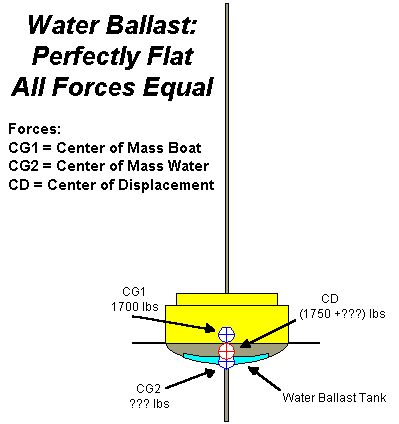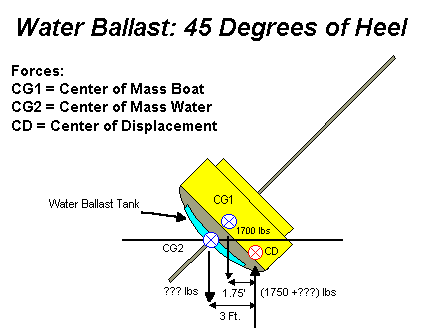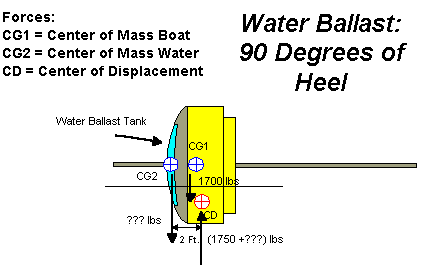| Comparing
the C25 and C250 If
I take the figures from the 45 degree analysis and apply
them using the weight and ballast of the C25 and C250
respectively, then I can determine the difference in the
righting torque for these two boats.
The C25 (swing keel) has a total
weight of about 4,150 lbs - 1,500 lbs of which is the
keel. The boat alone weighs 2,650 lbs.
The C25:
for CG1: (1.75 ft x 2650
lbs) = 4638 ft-lbs
for CG2: (4.5 ft x 1500
lbs) = 6750 ft-lbs
11,388 ft-lbs
Total for the C25 (wow!).
The C250 (Water Ballast)
has a total (unfilled) weight of 2,400 lbs and holds
1,200 lbs of water ballast. The total sailing weight is
3,600 lbs.
The C250:
for CG1: (1.75 ft x 2400
lbs) = 4200 ft-lbs
for CG2: (2.0 ft x 1200
lbs) = 2400 ft-lbs
6,600 ft-lbs Total
for the C250.
Obviously, these two boats
have very different righting torques (11,388 vs. 6,600),
and could be assumed to have different sailing
characteristics. If the boats were to have about the same
righting torque from the ballast (i.e. increasing that of
the C250), I can figure out how much water ballast would
be needed in the C250.
for CG2 (C250): = 6750
ft-lbs / 2ft = 3,375 lbs. Water Ballast
|


